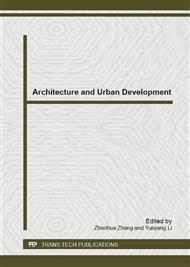p.473
p.477
p.484
p.488
p.492
p.497
p.504
p.511
p.516
Strength Analysis of BFRP Rebar Based on Kolmogorov–Smirnov Test and ANOVA Method
Abstract:
A very triditional and comprehensive understanding of the rebars’ static strength is that the strenth followes a normal distribution, no evidence or mathmatic test have adopted to prove that. This paper wants to bring a new idea to analyze the real true result to the former understanding. And finally a six more general distribution forms are used to give a provement which ignored in many strength analyis in China engineering community.During the provement, Fisher test and ANOVA method are studied carefully to suport the KS test.
Info:
Periodical:
Pages:
492-496
Citation:
Online since:
November 2012
Authors:
Keywords:
Price:
Сopyright:
© 2012 Trans Tech Publications Ltd. All Rights Reserved
Share:
Citation:


